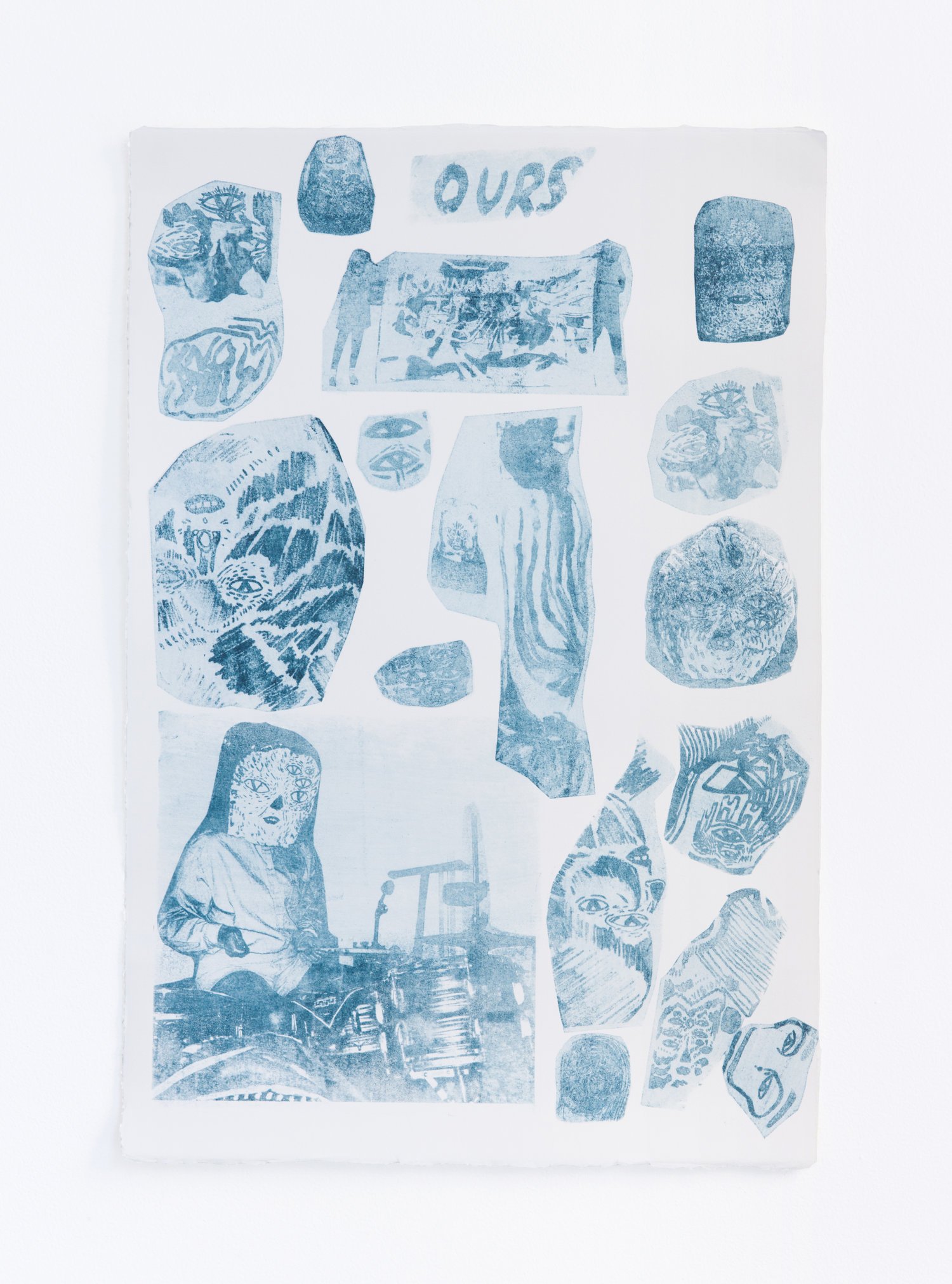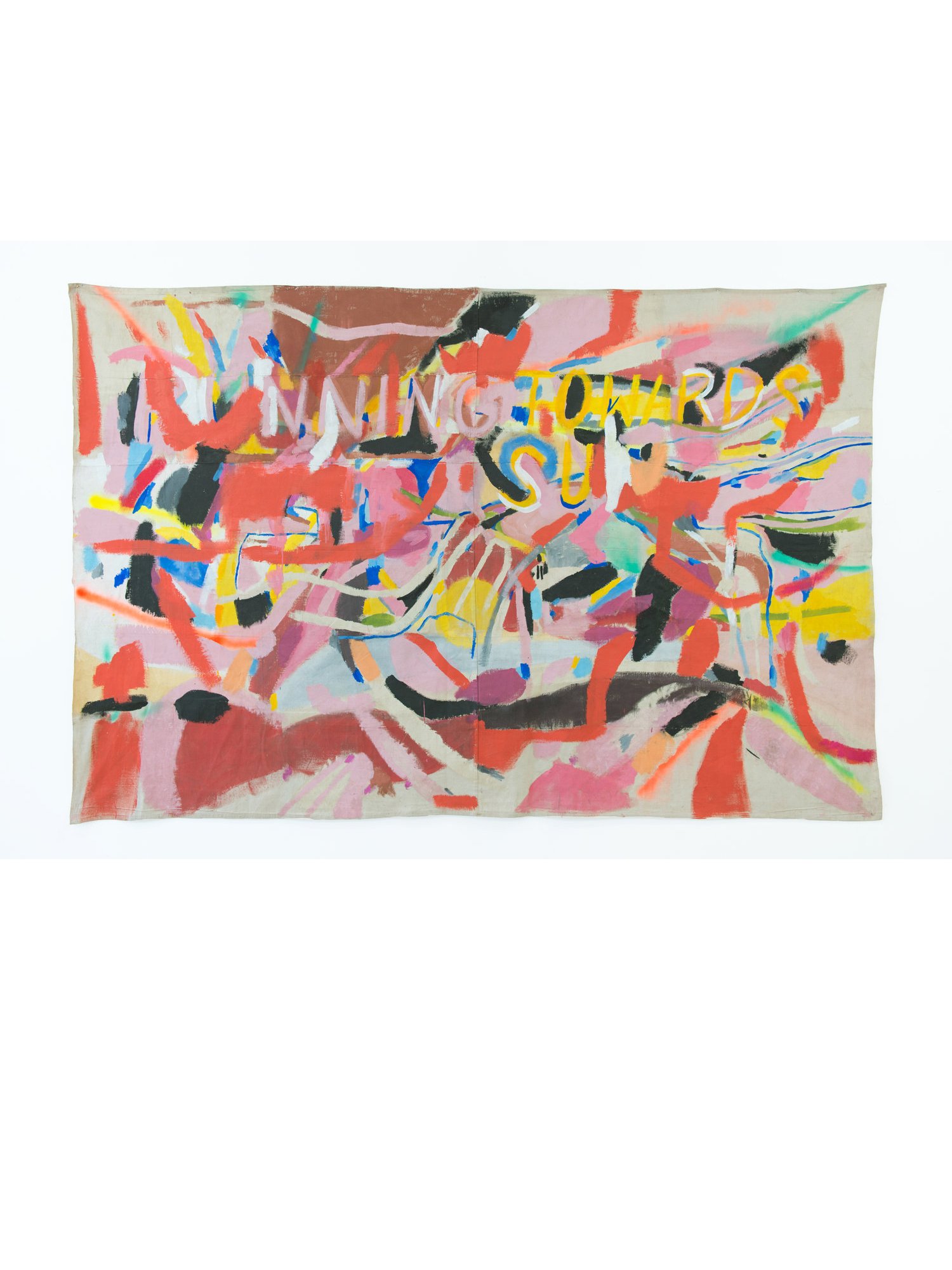Running Towards the Sun
Guadalupe Maravilla, Grace Rosario Perkins,
and Efraín Rozas
July 10 - August 5, 2018
315 Gallery is pleased to present Running Towards the Sun, a group exhibition featuring the work of Guadalupe Maravilla, Grace Rosario Perkins, and Efraín Rozas. The three artists create paintings, sculptures and instruments that draw on both indigenous traditions and invented personal practices, in order to fortify and reorient the self amidst conditions of displacement and global capitalism. Hailing from El Salvador, New Mexico, and Peru, respectively, Maravilla, Perkins, and Rozas embrace ritual as a contemporary technology—one that can be made, and remade by individuals in response to immediate concerns. The exhibition’s title, which takes its name from a painting by Perkins, speaks to the generative, energetic life of their practices and their immeasurable, if capacious effects.
Music plays a part of the conversation. Efraín Rozas contributes a robotic instrument that improvises continuously on Batá drums, according to a polyrhythmic, Latin American sensibility. Rozas, who moved to New York from Lima in 2010, is a composer, performer, and robotics/software developer interested in expanding the possibilities of electronic music technology to accommodate non-Western forms of knowledge and sociality. Primera Prótesis (First Prosthesis), was built by Rozas using a custom software, which is a generative algorithm drawing from concepts of rhythm used in Santeria and Yoruba rituals—a major influence on Latin American sound—and Rozas' personal ideas of time. The piece is part of a larger musical project called Myth and Prosthesis, which asks how we might develop our own technologies—our own prostheses—that resist the interiorized hold that capitalism and colonial histories have over our dreams, delusions, and daily life. Can we develop new grammars, and myths, which might forge a new reality? For Rozas, music is one way forward. The robot, which resides normally at the heart of the artist’s home, functions as an altar and space for deep listening, as well as a motor for free movement and dance.
Guadalupe Maravilla also contributes an altar to the space with Shrine for the Undocumented Children, a new installation made in response to the ongoing U.S. immigration crisis. Maravilla, who immigrated to the States alone as a child from El Salvador to escape civil war, has devoted his artistic practice to raising awareness around the struggles of undocumented immigrants and asylum seekers. His interdisciplinary and collaborative work is driven by a belief in art’s capacity to shape spaces of healing, and often involves choreographing collective rituals that draw on his own Mayan/Mestizo ancestry. Maravilla transforms his personal shrine into a larger piece that pays tribute to children who were lost while journeying to this country. It includes totemic objects and materials including casts of children’s boots, jugs of water, and soil from the U.S./Mexico border, and the artist’s native El Salvador. The piece extends onto the wall with a drawing that reinterprets a Salvadorian children’s game called Tripa Chuca, in which players take turns drawing lines that do not intersect. Dating to Pre-Columbian time, the game is a kind of ritual that for Maravilla can be used to form a map between persons who share experiences of border-crossing. During his journey to the U.S. as a child, the the artist often played the game alone with himself, an experience which he revisits here.
Painting as a space of forward-motion and renewal concerns Grace Rosario Perkins who contributes Running Towards the Sun, for which the exhibition is named. The painting refers to a Navajo puberty ritual called kinaalda, in which a woman gets up at sunrise and runs towards the sun to mark her first menstrual cycle. Perkins, who grew up living between between city centers in New Mexico and California as well as the Navajo Nation, and the Gila River Indian Community, missed the act as a teen, reclaiming it later in her thirties as a kind of extended puberty ritual. The painting revisits it again, embedding the phrase into an expansive, dense field of warm color that spreads musically across the canvas. Perkins, who considers herself a maximalist, sees color as a sacred and symbolic universe that has been historically erased by colonial powers. The piece looks energetically to history as a means of future investment, and self-care.
Grace Rosario Perkins Ours (Everything), 2017 Photolithograph 22 1/4 x 14 3/4 inches
Grace Rosario Perkins Running Towards the Sun, 2018 Acrylic and spray paint on canvas 71 x 106 inches
Efrain Rozas Prosthesis 1, from the series Myth and Prosthesis, 2018 Custom software, bata drums, solenoid motors, percussion hardware, and assorted found objects Dimensions variable








